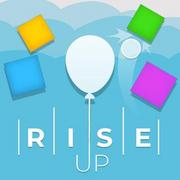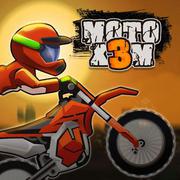In today's digital educational and work environments, "unblocked games" have become a unique cultural phenomenon. These games earned their name because they can bypass network restrictions set by schools, offices, and other institutions, allowing users to enjoy gaming experiences in these restricted environments. With the proliferation of the internet and the rise of digital natives, this phenomenon is not just a technical workaround but reflects profound changes in modern youth culture and digital entertainment methods.
The Origins and Evolution of Unblocked Games
The earliest "unblocked games" can be traced back to the early internet era when Flash games swept the globe. As schools and workplaces began implementing network restriction policies to prevent students and employees from accessing gaming websites, a new demand emerged: how to continue gaming experiences in these restricted environments? Initially, this was primarily achieved through proxy servers or special URLs, but as network administrators increased the complexity of restriction measures, game developers and players continuously innovated, seeking new breakthroughs.

Early Flash games were the predecessors of "unblocked games"
With the end of the Flash era and the rise of HTML5 technology, "unblocked games" entered a brand new development stage. HTML5 games don't require plugin support and can run directly in browsers, making games more lightweight, faster to load, and harder for network filtering systems to identify and block. The emergence of platforms like "Unblocked Games 6x" represents this period's signature products, providing a large number of games accessible in restricted network environments to meet users' entertainment needs.
Why Are "Unblocked Games" So Popular?
To understand the popularity of "unblocked games," we need to analyze from multiple perspectives. First, from a psychological perspective, restricted things are often more attractive. When schools or workplaces prohibit certain activities, this may instead stimulate people's curiosity and desire for challenge, prompting them to seek ways to circumvent restrictions.
Second, from a sociological perspective, games play an important role in modern youth culture. For digital natives, games are not just entertainment methods but also social media and part of cultural identity. When their gaming activities are restricted, it also means their social and cultural experiences are weakened, so they naturally seek alternatives.

Gaming has become an important part of modern youth social culture
Furthermore, from an educational perspective, appropriate gaming activities can alleviate learning pressure and provide necessary rest and entertainment. Research shows that brief gaming breaks can help students restore attention and improve learning efficiency. Therefore, some educators have begun to rethink gaming restriction policies and explore the possibility of integrating gaming elements into the educational process.
The Cultural Significance of Unblocked Games
The "unblocked games" phenomenon goes far beyond simple technical circumvention; it reflects deeper cultural transformations and value conflicts. To some extent, it symbolizes digital natives' challenge to traditional authority structures and their efforts to fight for digital freedom.
At the same time, this phenomenon also reflects the tension between the educational system and digital culture. Traditional educational models often view games as distractions to learning, while modern educational concepts increasingly recognize the value of gamified learning. The popularity of "unblocked games" is, to some extent, a reflection on and challenge to existing educational models.
Games are no longer just entertainment; they have become cultural symbols, social media, and even learning tools. In this context, we need to rethink the relationship between games and education.

Gamified learning is changing traditional educational models
Types and Trends of Unblocked Games
In the world of "unblocked games," certain types of games are particularly popular. According to user data analysis, the following categories are most favored:
1. Fast-Paced Arcade Games
Endless runner games like "Run 3" and "Slope" are highly popular because they are simple to pick up, have flexible gaming times, and are suitable for short break periods. These games typically don't require saving progress; players can start and stop anytime, making them perfect for breaks between classes or work.
2. Classic Nostalgic Games
Classic games like "Tetris" and "Pac-Man" are also popular on "unblocked games" platforms. These games not only have simple yet addictive gameplay but can also evoke nostalgic feelings for players, whether older generations reminiscing about childhood or younger generations experiencing retro trends.
3. Multiplayer Competitive Games
Despite potential impacts on gaming experiences in restricted network environments, multiplayer games like "Among Us" and "Minecraft Classic" still hold a place in the "unblocked games" domain. These games fulfill players' social needs, allowing interaction with friends or strangers even in restricted environments, which is a key factor in their continued popularity.

Multiplayer games hold an important position in "unblocked games"
Educators and Unblocked Games
Facing the "unblocked games" phenomenon, educators' attitudes are undergoing subtle changes. On one hand, they still focus on students' attention allocation during school hours, hoping to create a focused learning environment; on the other hand, more and more educators are beginning to realize that completely banning games may not be the best solution.
Some forward-thinking educational institutions are attempting to integrate gaming elements into the teaching process, creating "edutainment" content. For example, through math games, language games, or historical simulation games, making the learning process more fun and interactive. This approach not only meets students' gaming needs but also guides them to transform these needs into learning motivation.
Rather than prohibiting students from playing games, it might be better to guide them to play educational games or play games at appropriate times. This "guidance" rather than "prohibition" approach may be more in line with modern educational concepts.
Future Development Trends of Unblocked Games
With the continuous development of technology and the constant updating of educational concepts, the "unblocked games" phenomenon will continue to evolve. Here are several possible development trends:
1. Integration of Games and Education
In the future, we may see more games specifically designed for educational environments. These games will not only be entertaining but will also help students learn knowledge or develop skills during gameplay. This integration will blur the boundaries between gaming and learning, creating more immersive educational experiences.
2. Balance Between Technology and Policy
With technological development, the "cat and mouse game" between network restrictions and game access will continue to exist. But future approaches may be more balanced, such as time-based access control or differentiated strategies for different content, rather than simple blanket bans.

Future educational environments may place greater emphasis on gamification elements
3. Community Building and Cultural Identity
Communities formed around "unblocked games" will continue to develop and may produce more cultural symbols and social norms specific to this field. These communities are not just places for gaming exchanges but may also become important platforms for teenagers to form cultural identities and develop social skills.
Conclusion: Understanding Rather Than Simple Judgment
The "unblocked games" phenomenon is a product of the digital age, reflecting complex interactions across technology, culture, education, and society. For this phenomenon, what we need is not simple judgment or one-size-fits-all policies, but deeper understanding and more inclusive approaches.
Games themselves are neither completely "distractions" nor absolute "learning tools"; their value and impact depend on how they are used and in what context they are used. While recognizing the challenges games may bring, we should also appreciate their value as cultural expressions and social media.
Ultimately, the "unblocked games" phenomenon reminds us that in the digital age, the boundaries between education and entertainment are being redefined. We need to create an environment that both protects the focus of learning and respects young people's needs for digital culture and entertainment. Only in this balance can we truly cultivate digital citizens adapted to the future world.



